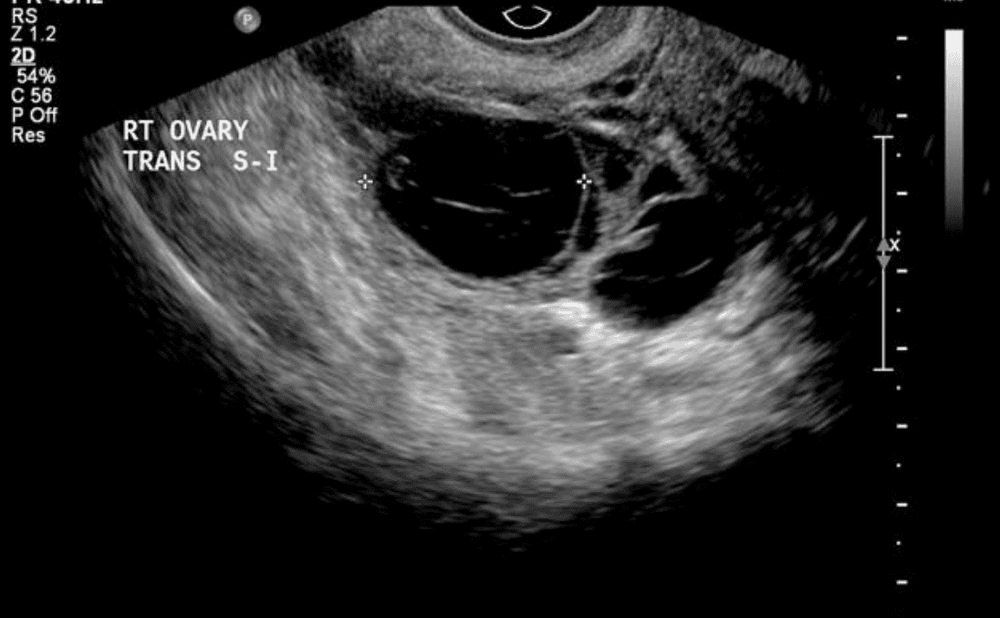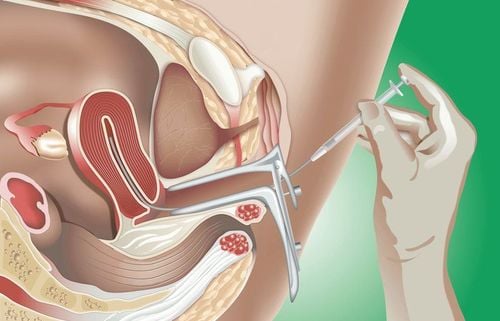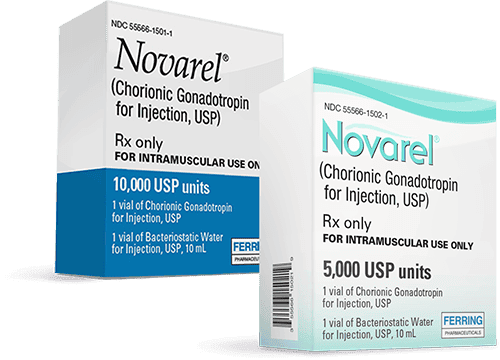This is an automatically translated article.
The article was professionally consulted by Specialist Doctor Obstetrician and Gynecologist - Department of Obstetrics and Gynecology - Vinmec Hai Phong International General Hospital.
An ovarian abscess is a pus-filled sac in the ovary. This is a serious complication of an upper genital tract infection when left untreated or ineffectively treated. If the abscess bursts, it will destroy the ovaries and nearby organs, seriously affecting the patient's health.
1. What is an ovarian abscess?
The female genital tract is inherently connected to the outside of the body, so it is completely possible to be invaded by germs. Infection here is usually caused by sexually transmitted agents or when there is an imbalance of resident microorganisms, causing genitourinary diseases.
In which, pelvic inflammatory disease is defined as acute infections in the upper genital tract in women, involving one or all of the uterus, fallopian tubes and ovaries. Not only that, the organs in the pelvic region surrounding the internal genitals in women are also difficult to avoid being affected.
Considering the ovaries alone, the invasion of bacteria, often coming through the fallopian tubes, will cause inflammation of the ovary. Bacterial proliferation activates the body's immune system, causing inflammatory responses aimed at killing germs. This also makes more or less damage to the structure and function of the ovaries. If this condition lasts for a long time, the autoimmunity is weakened against the virulence of the bacteria, and the patient is not treated actively or using ineffective drugs, ovarian inflammation will lead to ovarian abscess.
At this point, an ovarian abscess actually becomes a sac filled with pus, inflammatory cells and bacteria in the ovary. Moreover, pathogens from ovarian abscess are completely capable of moving to another part, such as following the fallopian tubes, upstream into the uterine cavity, causing adnexal abscesses. This is a serious complication of genital inflammation, not only the entire reproductive organs are difficult to preserve, causing female infertility but the patient's life is also extremely dangerous.

2. What are the causes of ovarian abscess?
A woman is at high risk for ovarian abscess when one or more of the following factors are present:
Untreated or poorly treated pelvic inflammatory disease Unprotected sex Sex for many people Age started having sex in adolescence Have a weakened immune system, congenital or acquired, such as diabetes, HIV/AIDS or chemotherapy Treatment for female infertility can related to ovarian stimulation Have a history of diverticulitis, appendicitis, or necrotizing enterocolitis Have a pelvic infection after surgical or surgical intervention Have a state of sepsis Use an IUD to contraception.
3. What are the signs and symptoms of an ovarian abscess?
A dull ache in your lower abdomen or in your pelvis Pain that increases with exercise or during sex A feeling of bulging in your lower abdomen Long menstrual periods or heavy menstrual bleeding Negative bleeding abnormal vaginal discharge between cycles Cloudy vaginal discharge, strong odor Nausea or vomiting Lower back pain Fatigue, lethargy Dull fever or intermittent chills.
4. The danger of ovarian abscess
The danger of ovarian abscess lies in its complications:
Germs from an ovarian abscess can invade nearby organs, causing tubal abscess, uterine abscess or abscess subsections in general. If the abscess ruptures, the inflammatory fluid spreads to the pelvis, causing pelvic inflammatory disease or generalized peritonitis. This source of infection is very easy to invade the bloodstream, travel to other organs in the body, easily leading to sepsis, septic shock.
Besides, the proliferation and pathogenicity of bacteria in the ovary will damage and decrease ovarian function. Moreover, because it can lead to inflammation of the fallopian tubes, accompanying inflammation of the uterus, even if it is thoroughly treated later, the healing of the adhesions and blockages at the site can cause female infertility. Even the cause of infertility may be due to the indications for hysterectomy and emergency appendages to preserve the patient's life.

In summary, ovarian abscess is a dangerous diagnosis that can have serious consequences. However, this disease can be prevented with a healthy sexual lifestyle, keeping proper genital hygiene, going to the doctor and actively treating when there are signs of genital inflammation, proactively preventing it. It is too late to progress to an abscess.
In order to help customers detect and treat other gynecological diseases early, Vinmec International Hospital has a basic gynecological examination and screening package, helping customers detect early inflammatory diseases Easy, inexpensive treatment. Screening detects gynecological cancer (cervical cancer) early even when there are no symptoms.
Basic gynecological examination and screening package for female customers, has no age limit and may have the following symptoms:
Abnormal vaginal bleeding Having menstrual problems: irregular menstrual cycle, irregular menstrual cycle Irregular vaginal discharge (smell, different color) Vaginal pain and itching Female clients have several risk factors such as poor personal hygiene, Unsafe sex, abortion,... Female customers have other symptoms such as: Abnormal vaginal discharge, itching, pain in the private area, abnormal vaginal bleeding.
Please dial HOTLINE for more information or register for an appointment HERE. Download MyVinmec app to make appointments faster and to manage your bookings easily.













